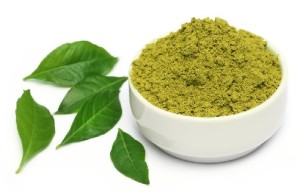Henna/ Mehendi/Mehanti/Mylanchi/Medhini (Lawsonia Inermis Linn)
Henna or Mehndi or Mailanchi – A traditional medicinal plant.
Nature has been a rich source of therapeutic agents for thousands of years and an impressive number of modern drugs have been isolated from natural sources based on the uses of these plants in traditional medicine. Henna is one such plant commonly known as Persian Henna or Lawsonia inermis, a bushy, flowering tree, commonly found in Australia, Asia and along the Mediterranean coasts of Africa.Henna is a flowering plant and the sole species of the Lawsonia genus. The English name “henna” comes from the Arabic حِنَّاء (ALA-LC: ḥinnāʾ; pronounced [ħɪnˈnæːʔ]) or, colloquially حنا, loosely pronounced as /ħinna/.(Wikipedia)
Over 9,000 years old, henna use dates back to the Neolithic and Bronze Ages. It has roots in spring fertility celebrations, was used by warrior goddesses to celebrate victories, and was useful in determining agricultural cycles. Henna is mentioned in the Bible and is the oldest documented cosmetic. It is soothing and cooling to the skin and has been used to treat heat exhaustion, lice, and fungal infections. It has mild antiseptic properties, and is a natural sun block.
Mehndi or Mailanchi or Henna Magic Plant
Henna has a great healing effect, it contain many healing substances like Tannine and other Glue like substances.It has anti microbial effect especially anti-viral effect. Henna promote wound healing especially chronic wounds and ulcers. Henna can be used as a prophylaxis especially to protect diabetic patients feet
- It help to heals fissures and cracks in the foot and reduce foot infection.
- It improve the skin texture, which look healthier and softer.
The art form of henna (Arabic) or mehndi (Hindi) varies from region to region. Varying designs have a different meaning for members of each culture, such as good health,fertility, wisdom, protection and spiritual enlightenment. While Arabic henna designs are usually large, floral patterns on the hands and feet, Indian mehndi involves fine, thin lines for lacy, floral and paisley patterns covering entire hands, forearms, feet and shins.
Women in India are traditionally painted henna on their hands and feet, insides of their arms and up their shins most often for a wedding, or other special occasion. Sometimes the chest, neck and throat will be tattooed. The subject matter is rather abstract, and often incorporates religious and auspicious symbols.





















